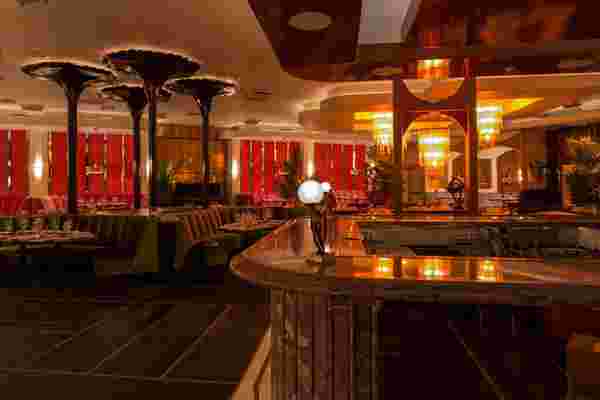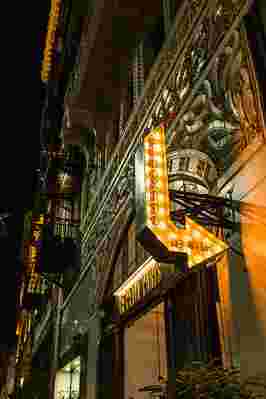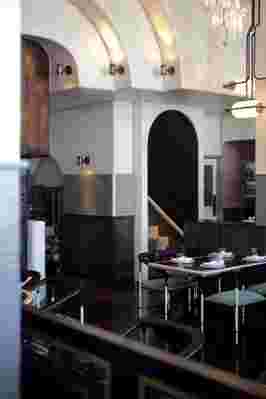How Art-Deco Glamour Is Fast Replacing Scandinavian Cool in L.A.
For the past several years, the prevailing design trend in Los Angeles ’ booming foodie scene has been a Scandinavian-inflected California cool. Throughout the trendiest new eateries, the recurring theme is blond woods and white walls, minimalist tables and chairs, and access to lots and lots of natural light. Recently, however, a new crop of bars and restaurants has been going against the modernist tide, embracing a dramatic opulence of Great Gatsby proportions: stacked chandeliers, glossy finishes, and Art Deco detailing (preferably in gold whenever possible). Interiors in L.A. have started to go back to their roots to revive a different California boom—the Old Hollywood glamour of the roaring twenties.

Describing his starting point as “the hyper-stylized, classy-yet-raucous vibes of Old Hollywood nightlife,” designer John M. Sofio’s influences for this West Hollywood supper club range from the interiors of The Queen Mary ocean liner to Lucille Ball's Hancock Park home. The main event at Delilah are the four vertical pillars in the center, sheathed in 900 hand-cut mahogany petals and lacquered with a high-sheen finish. “They were inspired by Frank Lloyd Wright's 1939 Johnson Wax Factory,” he says, but to a decidedly more luxurious effect. 7969 California Route 2, West Hollywood, CA 90046

Part of this Art Deco nostalgia is due to the recent migration back to historic Downtown L.A., and where young people move, so do the bars. With contractor James Peres, El Dorado owner Rio Hackford styled his DTLA basement speakeasy to evoke the secrecy of the building’s Prohibition-era roots: Tufted leather banquettes, low-lit sconces, and art-glass panels line the walls. “The architecture alone is so gorgeous,” says Hackford. “When I first went into the building, the railing going down to the basement just screamed classic cocktail Art Deco, which pretty much dictated the rest of the space.” 416 S Spring St, Los Angeles, CA 90013

Paying homage to the 1926 building it occupies, Oliver Haslegrave and his New York-based firm, Home Studios , infused Gwen ’s interior with Old Hollywood drama: tiered crystal chandeliers, lush velvet and rattan banquettes, and custom mouth-blown pendant lights. As a nod to Gwen’s meat-focused menu, Haslegrave also made reference to “the elegance and rituals of traditional butcher shops in Europe,” he says, by installing a traditional Asador-style hearth at the center of the dining room and pairing it with a lustrous copper firescreen. 6600 Sunset Blvd, Los Angeles, CA 90028
Owner Edward Simonian did the interiors of the Edmon as well as the intricate metal doorway himself, having actually grown up in a family of woodworkers who lived and worked in the very same building. “The building was built in the ’20s primarily to house actors and actresses for Paramount Studios, which is a block away,” Simonian says. To honor the building’s heritage, he named the bar after his father and painstakingly recreated the ’20s look through online research. Images of the Chrysler building, he says, were a major inspiration. 5168 Melrose Ave, Los Angeles, CA 90038
Housed in the landmarked 1930s former CBS Studios, Paley catches the tail-end of the Old Hollywood era, when Art Deco was starting to slip into the more simplified outlines of Streamline Moderne. Key features include the perforated metal wall dividing the main dining and wine rooms, which was designed to evoke the look of vintage microphones, according to the designers of Plan Do See , who worked in collaboration with Bishop Pass . Wood tambour columns, hand-poured terazzo flooring, and anodized brass add warmth to the space, while the midcentury-modern light fixtures ironically add contemporary flair. 6115 Sunset Blvd #100, Los Angeles, CA 90028